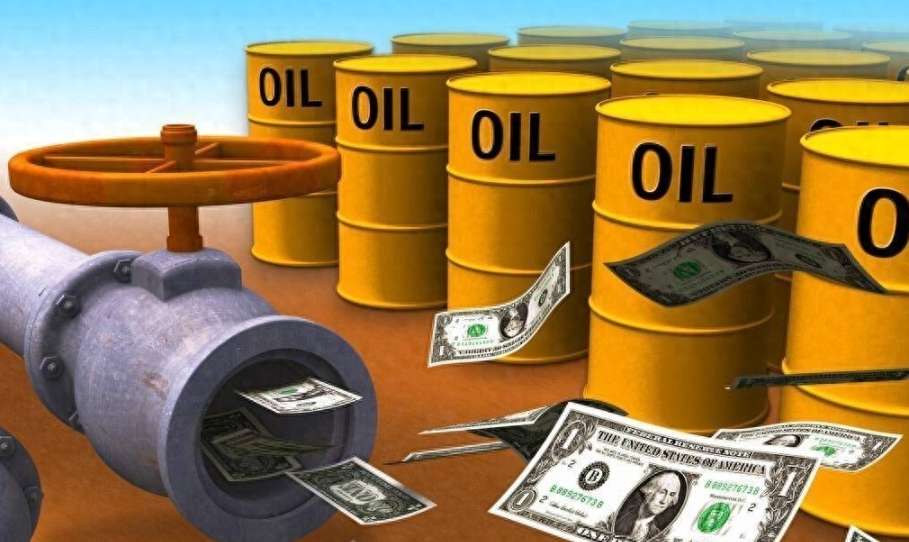Fed Easing Fuels Inflation Concerns
Advertisements
As the world evolves, a seismic shift is occurring in global finance, particularly following the decoupling of the dollar from oil earlier this yearThis unprecedented event has left the supremacy of the US dollar teetering on the brink of collapseInvestors, including those prominent figures on Wall Street, are now approaching US bonds with an unprecedented level of apprehension, marking a significant departure from their historical role as a pillar of securityWhat ramifications might this have? A financial giant, once considered untouchable, now faces an extraordinary upheaval within its own bordersThe dominance of the dollar, a cornerstone of America's worldwide influence, is grappling with formidable challenges
In the past, the United States has relied heavily on fiscal deficits as a catalyst for economic growth, resembling a consumer consistently maxing out their credit cards without addressing the inevitable debt repaymentAs foreign demand for US Treasury bonds falters, the stability of the American economic framework is at stake, revealing the precariousness of this financial structureIt is akin to constructing magnificent towers in the air—impressive in appearance but fraught with inherent risks lurking just beneath the surface.
Once viewed as a financial savior, Federal Reserve policies are increasingly falling short in delivering the anticipated remedies amid a continuously deteriorating economic environment.The US governance system is undergoing profound reform, revealing sharp internal conflicts among various interest groups
- US Stock Market Corrections Expected in 2025
- Buffett Ups His Stake!
- The Fed's Path to Resolution in 2025
- Deep Divisions in American Interests
- Russian Goods Stores Gain Popularity Across China
Representing a ship navigating stormy seas, departments within the government are vigorously competing for resources and power, oblivious to the overarching instability threatening to capsize their vesselThe filing of lawsuits by bankers against the Federal Reserve signifies not just the risks beleaguering the financial system but also the intense rivalries among factions vying for control.
Is it still appropriate to refer to US debt as “debt”? This question demands earnest considerationThe swift sell-off of US bonds by banking institutions, resulting in plummeting bond yields, indicates that a significant collapse may be looming.Such risks extend beyond the borders of the US, threatening a monumental disruption within global financial markets.
The alarming decline in reserves of the American banking system, dropping below $3 trillion, echoes across Wall Street, igniting a fear unlike any that pervades the financial landscape
Many are anxiously anticipating that the Federal Reserve's tightening measures could incite a liquidity crisis, akin to depriving an already parched plant of its last drop of water, leading to inevitable wilting.The possibility of abolishing the debt ceiling is on the rise, suggesting that the US government could issue bonds without constraintsIf the Federal Reserve opts against synchronizing a fresh round of Quantitative Easing (QE) with the government's efforts, American debt could suffocate the liquidity inherent within the dollarThis creates a vicious cycle: with the government producing an enormous volume of bonds, currency devaluation spirals into hyperinflation, ultimately steering the economy towards ruin.
Janet Yellen has cautioned Congress that the Treasury may have to adopt unconventional measures to avert a debt default, which only intensifies market anxiety

The US government finds itself in a predicament where it must choose between defaulting on its debts or resorting to limitless bond issuance—both scenarios portending immense financial crises.To evade impending disaster, the Federal Reserve may again resort to QE, yet this would ultimately lead to a robust depreciation of the dollar and spark a new wave of inflationIt’s akin to a patient who, to prolong life, must consume hazardous doses of medication—momentarily alleviating symptoms yet inviting perilous side effects.
If the Federal Reserve opts to inject liquidity into the system, asset prices are likely to skyrocket; however, the dollar’s stature has diminished considerably due to factors like military conflicts, the abandonment of oil-backed dollars, and the imposition of sanctions on SWIFT, all contributing to a shattered international confidence in the dollar.Upon the initiation of QE, the depreciation of the dollar could be unprecedented, inviting disproportionate inflationary pressures.
Though the financial condition of the US remains comparatively favorable at this moment, the pressing issue surrounding the debt ceiling looms ahead, exacerbated by mismatches between long and short-term bonds alongside high-interest outlays representing significant hazards
Time is running short, and by the third quarter of 2025, the Treasury will remove $750 billion from the market; absent Federal Reserve intervention, a debt crisis may eruptHowever, any involvement by the Federal Reserve would simultaneously usher in renewed inflationary shocks.The Federal Reserve stands at a crossroads, pulling them in different directions, grappling with the potential of a debt crisis threatening to explode on one hand and the escalating inflation crisis threatening to heighten on the other—regardless of the chosen route, profound consequences will follow.
This dilemma extends far beyond the borders of the United States; it exemplifies the mounting challenges confronting the global economy
Post Comment